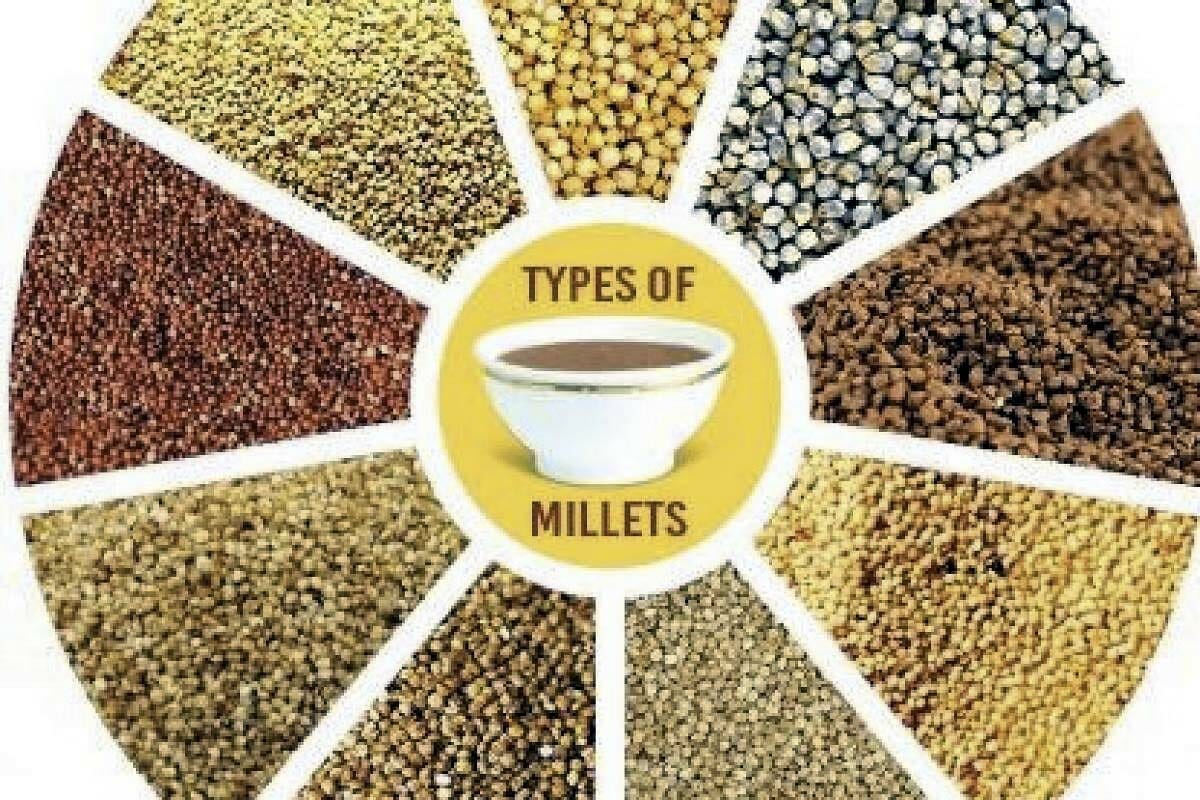Millets are small-seeded grasses increasingly recognized as an important crop for India’s food security. Millets have been grown in India for centuries, but their production has recently declined due to the Green Revolution, which favoured rice and wheat production. However, millets have immense potential to improve India’s food security as they are highly nutritious and resilient to climate change. This blog post will explore the environmental and economic benefits of millet cultivation in India, the Indian government’s investment in millet promotion, and the Odisha Millet Program reviving farm-to-plate production in India.

Indian Farmers And Millet Production: Mitigating Climate Change And Improving Livelihoods
We often discuss the potential of agriculture to enhance food security globally, and in India, millet production presents a unique opportunity to achieve this objective. Indian farmers face extreme financial distress and unsustainable yield due to climate change, leading to a suicide rate of 29 deaths per day. Given these circumstances, the Government of India is introducing initiatives to create markets for millets and encouraging their production among smallholder farmers who may have few options outside of agriculture.
Millet is a highly nutritious grain with low glycemic index values and high levels of fiber, aiding in digestion and weight management. These resilient crops can be grown in dry or wet climates and require less water than other grains like rice or wheat, offering the potential to significantly improve food security for millions of households across India while mitigating climate change.

Furthermore, millet farming provides an additional source of income for smallholder farmers, as there is a growing international demand for its nutritional value. This can incentivize more people to produce millets, even in unfavourable environmental conditions like drought or floods due to climate change. Government programs to create markets for these products can further reduce financial distress among Indian farmers.
In conclusion, millets have the potential to mitigate climate change and improve livelihoods across India’s rural communities, making it an opportunity worth considering.
The Impact Of The Green Revolution On Indian Food Production
The Green Revolution had a significant impact on India’s food production, and the potential of millets to improve India’s food security should not be overlooked. In the 1960s, India faced severe food shortages and requested 10 million tons of wheat from the United States. However, President Johnson only provided a small amount of aid due to his resentment towards Gandhi’s opposition to the Vietnam War. As a result, India decided to take matters into their own hands and initiated the ‘Green Revolution’.
The Green Revolution implemented efficient and high-yield systems in Indian agriculture to become self-sufficient in their own food supply. The most popular system adopted was the Rice Wheat Cropping System, whereby rice and wheat crops were grown in sequence on the same field with great increases in crop productivity, as well as labor costs being reduced for economic benefit. Thanks to this new system and other important initiatives such as fertilizers and pesticides, Indian farmers managed to scale up their food production despite population growth over 50 years.
Today, Rice and Wheat are not just commodities but also fundamental parts of both Indians diets (with 70% consuming rice exclusively) and economy, currently taking up 9.2 million hectares, roughly 1.8 times larger than Punjab State alone! However, any good that this successful system has achieved must be weighed up against its potential negative consequences, such as soil erosion due to monocropping techniques or excessive usage of chemical fertilizer leading to water contamination, etc.
This is why it’s important for us to look at alternative solutions like millets – which are nutritious grains that are naturally drought-resistant – for improving India’s food security instead of relying solely on traditional methods like Rice and Wheat Cropping Systems alone!
India’s Water Crisis And The Over-Reliance On Rice And Wheat
India is facing a water crisis, and the over-reliance on rice and wheat is one of the main culprits. Rice and wheat are staples in the Indian diet, but their cultivation requires large amounts of water – anywhere from 500 to 5000 litres per kg. Overusing ground water has led to a drop in available resources, with 40 percent of India potentially having no access to drinking water by 2030.
The vast majority of the country’s fertile land is now being overexploited every year due to this reliance on rice and wheat, which could lead to a potential nightmare scenario by 2050 if nothing changes. This system not only puts strain on groundwater but also damages soil health through practices like monocropping, leaving the earth nutrient deficient.
However, there is a solution – millets. These small grains are highly nutritious, drought-tolerant, and require less water for cultivation than other crops like rice or wheat. Millets have been traditionally grown in many parts of India for centuries, but have been neglected due to modern farming practices that focus on growing larger crops for commercial gain.
By shifting focus back towards millet production, we could drastically reduce our reliance on other crops while still providing much-needed nutrition and food security throughout India.
Environmental Benefits Of Millet Cultivation In India
With India’s population reaching 1.3 billion and rising, food security has become a major issue for the country. Rice and wheat have been the main crops cultivated in India; however, this intensive farming method has led to soil erosion, nutrient depletion, loss of soil organic matter, and acidification due to heavy use of fertilizers and pesticides. Not only can these chemicals damage the environment, but they can also pollute both soil and water, as well as impact wildlife and even harm humans. Agriculture is responsible for 16% of India’s greenhouse gas emissions with 37% coming from rice alone!

Millets offer a potential solution to these issues surrounding rice/wheat cultivation. Millets are traditionally grown in arid areas due to their drought-resistant properties. They require fewer liters of water per kg than rice/wheat, so they need less irrigation. This helps restore ground water supply and allows farmland across India to be used for cultivation without relying heavily on rainfall for success – something that is incredibly important in a changing climate scenario.
Millets also have higher nutritional value than wheat or rice, meaning they could help increase dietary diversity which is essential for human health and development. Plus, millet production requires significantly fewer inputs such as fertilizers or pesticides, leading to improved environmental quality throughout India’s farming systems. Not only does this benefit wildlife, but it also reduces costs associated with buying fertilizer or pesticides, ultimately reducing cost at market.
Ultimately, millet cultivation offers an alternative approach that could potentially revolutionize the way we think about food security in India. Not only do millets provide an environmentally-friendly crop option, but they are incredibly nutritious too! This makes them ideal candidates for improving Indian food security while reducing environmental impacts – something we should all strive towards!
The Benefits Of Millets And How The Indian Government Is Investing In Their Promotion
Millets are an ancient grain cultivated in India since prehistoric times. They are rich in vitamins and minerals, such as magnesium, iron, and zinc, which can lower the risk of chronic diseases like heart disease and stroke. Millets are also gluten-free and high in dietary fiber, promoting healthy digestion and better nutrition absorption. Additionally, millet cultivation benefits soil health as it can fix nitrogen from the atmosphere. The Indian government has taken initiatives to promote millet culture by offering subsidies on agricultural inputs, hosting international festivals, and establishing education centers to raise awareness on its benefits. Millets can be used to make various dishes, from Laddu to poha, providing versatile and nutritious food options. With global demand for millets rising due to their nutritional value, the Indian government aims to improve accessibility domestically and internationally, revolutionizing food security for many countries. With proper support and awareness, a brighter future where everyone can enjoy quality and nutritious meals is possible.
Odisha Millet Program Revives Farm To Plate Production
Odisha’s millet program is making waves in the world of agriculture and nutrition. This unique program revives millets from farm to plate production and has garnered recognition from stakeholders at the State, national, and international level. The program has significant importance, given its potential to improve India’s food security through increased nutrition.
The government has incentivised farmers to follow millet intensification techniques, such as giving them 5,000 rupees per hectare. The minimum support price for millets has also been increased by Odisha, making it more viable in the market. Public welfare schemes such as Ragi Laddu and Midday Meal programs have also been introduced to promote mass awareness initiatives within the state and connect farmers with international markets.

This program benefits farmers and entrepreneurs looking to start businesses in millettes. Government policies provide an invaluable understanding of trajectory and connections to FMCG companies such as Marico ITC & Parlay. With this knowledge, they can create sustainable models that benefit all stakeholders, from farmers to consumers.
The potential of Odisha’s Millet Program is undeniable. If it continues on its current trajectory, it could revolutionize India’s food security landscape by creating healthier options that are accessible and affordable at every level of society while still allowing small-scale farming businesses to thrive.
To Sum Up
Millets have immense potential to improve India’s food security, mitigate climate change, and improve livelihoods for smallholder farmers. Millet is a highly nutritious grain that is naturally drought-resistant and requires less water than other grains like rice or wheat. The Government of India has invested in millet promotion, creating markets and incentivizing production among smallholder farmers. The Odisha Millet Program is further revitalizing the farm-to-plate production of millets in India. Therefore, it is important to consider the potential of millets to revolutionize Indian agriculture and food security while reducing our reliance on traditional methods, such as the Rice Wheat Cropping System, in order to reduce environmental impacts such as soil erosion and excessive usage of chemical fertilizers leading to water contamination.
